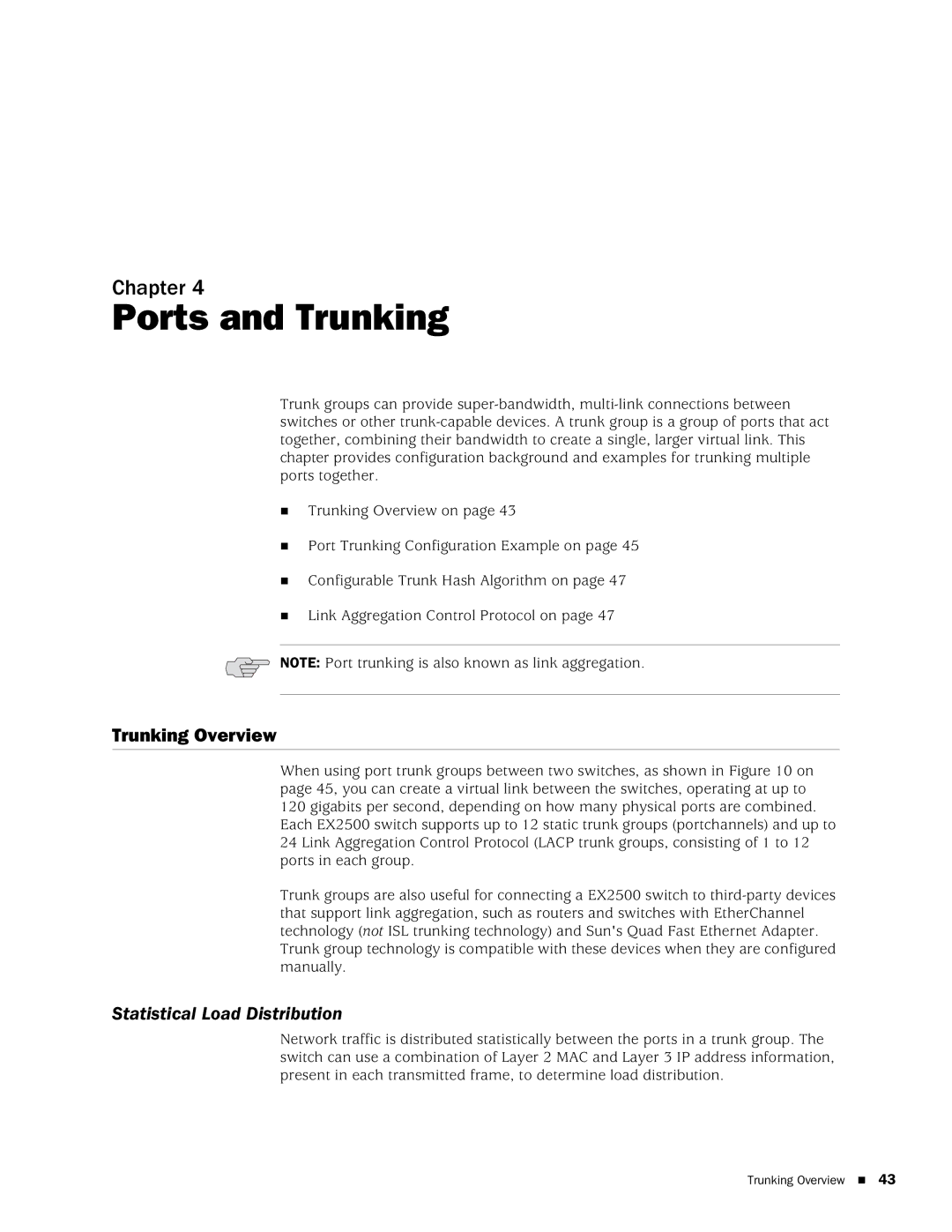
Chapter 4
Ports and Trunking
Trunk groups can provide
Trunking Overview on page 43
Port Trunking Configuration Example on page 45
Configurable Trunk Hash Algorithm on page 47
Link Aggregation Control Protocol on page 47
NOTE: Port trunking is also known as link aggregation.
Trunking Overview
When using port trunk groups between two switches, as shown in Figure 10 on page 45, you can create a virtual link between the switches, operating at up to
120 gigabits per second, depending on how many physical ports are combined. Each EX2500 switch supports up to 12 static trunk groups (portchannels) and up to 24 Link Aggregation Control Protocol (LACP trunk groups, consisting of 1 to 12 ports in each group.
Trunk groups are also useful for connecting a EX2500 switch to
Statistical Load Distribution
Network traffic is distributed statistically between the ports in a trunk group. The switch can use a combination of Layer 2 MAC and Layer 3 IP address information, present in each transmitted frame, to determine load distribution.
Trunking Overview 43
